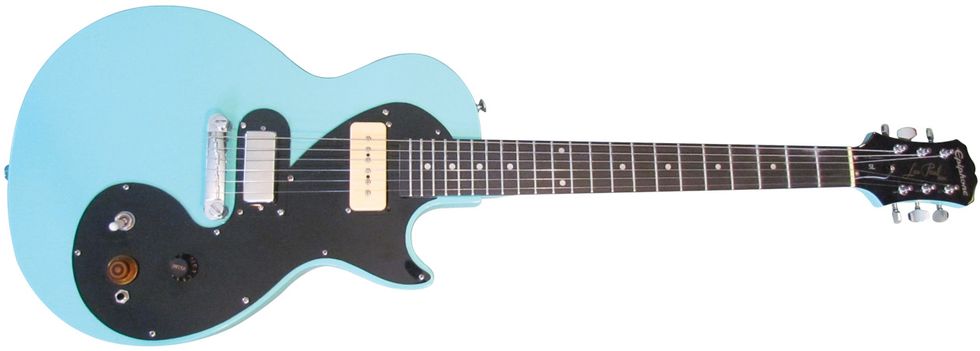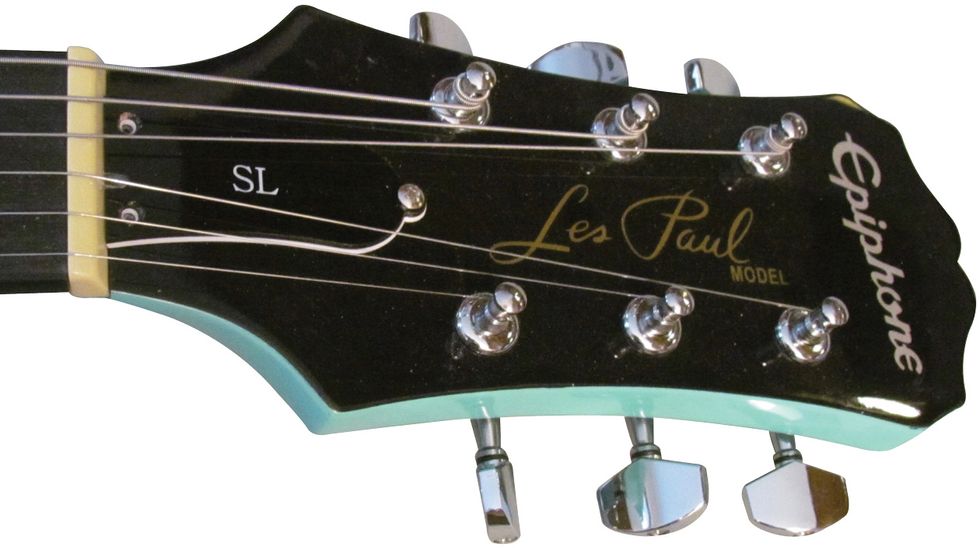I’ve always liked Gibson Melody Makers. The guitar was a Gibson student model during its original 1959 to 1971 run, and could be bought used for a song. The downside of those original Melody Makers, to me, always seemed to be the pickups, which were arguably the weeniest single-coils Gibson ever put on a guitar.
But a lot of guys would buy Melody Makers and simply replace those single-coils with humbuckers and have a hot-sounding instrument. I’ve owned quite a few over the years.
In 2017, Epiphone came up with what looks like its own version of the Melody Maker, called the Les Paul SL. I became aware of the guitar when fellow PG columnist John Bohlinger featured it in one of his First Look videos. It seemed so cool that I knew I had to get one, so I started looking around eBay.
Les Paul SLs were going for around $100 new, and I found a turquoise one for $99 with free shipping. I bought it. It played great, but just like my old Melody Makers, the two single-coil pickups sounded pretty thin. So I set it aside for future mods, and my chance came a while later after I bought another turquoise SL on eBay, which had already been modified with a P-90 in the neck and a mini-humbucker in the bridge.
This guitar’s headstock reveals its mixed Epiphone/Gibson lineage, with the angled ’stock and “Les Paul” lettering hewing to the historical build and look of the Melody Maker—the model that inspired the SL.
But when I received it, I was greatly disappointed. The neck had a lot of buzzing on the fretboard and the bridge’s mini-humbucker was weak and sounded terrible. Now, I had two SLs collecting dust.
One day I thought, “Why not just swap out the bad parts of both and make one sweet SL?” I took both guitars apart and decided that since the modified guitar already had the extra routing for the larger pickups, I would simply swap necks rather than pickguards. So I did. It wasn’t that hard. After playing the new guitar for a week, I confirmed that the weak-sounding mini-humbucker had to go. So I bought a generic alnico 5 mini-humbucker off eBay for $25 and installed it.
The key to improving the playability of the guitar Ray favored was to swap out the neck with its harder-to-play sibling. While that might be a challenge with most Gibsons and Epiphones, which typically have set necks, this model has a 4-bolt neck joint.
It was easy, because the pickguard and body were already routed out for a mini-humbucker. So, after putting everything back together, I plugged it into an amp and was finally satisfied. I now had it all: a guitar that played and sounded great. Listen to my MP3. You can hear the sweet neck tones from the P-90, and the growl from the bridge mini-humbucker.
Bottom Feeder Tip #478: Despite my problems with the Epiphone SLs, I now have six because I think they are excellent guitars for projects—just like the old Melody Makers used to be. They’re cheap, they’re lightweight, and they have tons of potential. So is it a keeper? Yeah, for now it is. And who can argue with a cool turquoise guitar?










![Rig Rundown: Russian Circles’ Mike Sullivan [2025]](https://www.premierguitar.com/media-library/youtube.jpg?id=62303631&width=1245&height=700&quality=70&coordinates=0%2C0%2C0%2C0)

















